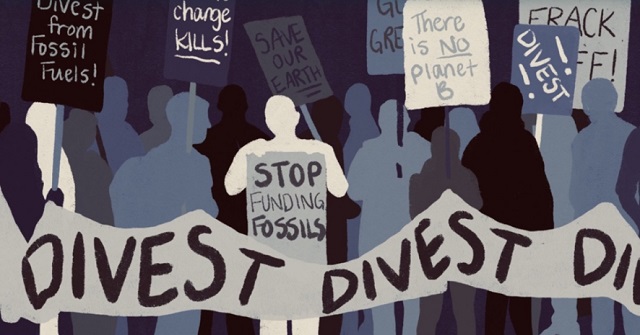C2C Journal
Indecent Proposals: How Activist Investors Hijacked Responsible Corporate Governance

From the C2C Journal
By Gina Pappano of InvestNow
It’s a central tenet of the free-market economy: a corporation’s job is to maximize investment returns to its shareholders. Bluntly, to make money. And “shareholder proposals” have been a powerful tool enabling investors to pressure a company’s board to take a particular action to increase its value. In recent years, however, activist groups have been weaponizing shareholder proposals to pressure companies into pursuing ideological goals, especially environmental and “progressive” social-welfare causes. In the case of the oil and natural gas industry, they’ve even pushed for companies to take actions that would drive them out of business. Veteran markets expert Gina Pappano examines this damaging phenomenon – and the new movement pushing back.
Agriculture
End Supply Management—For the Sake of Canadian Consumers

This is a special preview article from the:
U.S. President Donald Trump’s trade policy is often chaotic and punitive. But on one point, he is right: Canada’s agricultural supply management system has to go. Not because it is unfair to the United States, though it clearly is, but because it punishes Canadians. Supply management is a government-enforced price-fixing scheme that limits consumer choice, inflates grocery bills, wastes food, and shields a small, politically powerful group of producers from competition—at the direct expense of millions of households.
And yet Ottawa continues to support this socialist shakedown. Last week, Prime Minister Mark Carney told reporters supply management was “not on the table” in negotiations for a renewed United States-Mexico-Canada Trade Agreement, despite U.S. negotiators citing it as a roadblock to a new deal.
Supply management relies on a web of production quotas, fixed farmgate prices, strict import limits, and punitive tariffs that can approach 300 percent. Bureaucrats decide how much milk, chicken, eggs, and poultry Canadians farmers produce and which farmers can produce how much. When officials misjudge demand—as they recently did with chicken and eggs—farmers are legally barred from responding. The result is predictable: shortages, soaring prices, and frustrated consumers staring at emptier shelves and higher bills.
This is not a theoretical problem. Canada’s most recent chicken production cycle, ending in May 2025, produced one of the worst supply shortfalls in decades. Demand rose unexpectedly, but quotas froze supply in place. Canadian farmers could not increase production. Instead, consumers paid more for scarce domestic poultry while last-minute imports filled the gap at premium prices. Eggs followed a similar pattern, with shortages triggering a convoluted “allocation” system that opened the door to massive foreign imports rather than empowering Canadian farmers to respond.
Over a century of global experience has shown that central economic planning fails. Governments are simply not good at “matching” supply with demand. There is no reason to believe Ottawa’s attempts to manage a handful of food categories should fare any better. And yet supply management persists, even as its costs mount.
Those costs fall squarely on consumers. According to a Fraser Institute estimate, supply management adds roughly $375 a year to the average Canadian household’s grocery bill. Because lower-income families spend a much higher proportion of their income on food, the burden falls most heavily on them.
The system also strangles consumer choice. European countries produce thousands of varieties of high-quality cheeses at prices far below what Canadians pay for largely industrial domestic products. But our import quotas are tiny, and anything above them is hit with tariffs exceeding 245 percent. As a result, imported cheeses can cost $60 per kilogram or more in Canadian grocery stores. In Switzerland, one of the world’s most eye-poppingly expensive countries, where a thimble-sized coffee will set you back $9, premium cheeses are barely half the price you’ll find at Loblaw or Safeway.
Canada’s supply-managed farmers defend their monopoly by insisting it provides a “fair return” for famers, guarantees Canadians have access to “homegrown food” and assures the “right amount of food is produced to meet Canadian needs.” Is there a shred of evidence Canadians are being denied the “right amount” of bread, tuna, asparagus or applesauce? Of course not; the market readily supplies all these and many thousands of other non-supply-managed foods.
Like all price-fixing systems, Canada’s supply management provides only the illusion of stability and security. We’ve seen above what happens when production falls short. But perversely, if a farmer manages to get more milk out of his cows than his quota, there’s no reward: the excess must be
dumped. Last year alone, enough milk was discarded to feed 4.2 million people.
Over time, supply management has become less about farming and more about quota ownership. Artificial scarcity has turned quotas into highly valuable assets, locking out young farmers and rewarding incumbents.
Why does such a dysfunctional system persist? The answer is politics. Supply management is of outsized importance in Quebec, where producers hold a disproportionate share of quotas and are numerous enough to swing election results in key ridings. Federal parties of all stripes have learned the cost of crossing this lobby. That political cowardice now collides with reality. The USMCA is heading toward mandatory renegotiation, and supply management is squarely in Washington’s sights. Canada depends on tariff-free access to the U.S. market for hundreds of billions of dollars in exports. Trading away a deeply-flawed system to secure that access would make economic sense.
Instead, Ottawa has doubled down. Not just with Carney’s remarks last week but with Bill C-202, which makes it illegal for Canadian ministers to reduce tariffs or expand quotas on supply-managed goods in future trade talks. Formally signalling that Canada’s negotiating position is hostage to a tiny domestic lobby group is reckless, and weakens Canada’s hand before talks even begin.
Food prices continue to rise faster than inflation. Forecasts suggest the average family will spend $1,000 more on groceries next year alone. Supply management is not the only cause, but it remains a major one. Ending it would lower prices, expand choice, reduce waste, and reward entrepreneurial farmers willing to compete.
If Donald Trump can succeed in forcing supply management onto the negotiating table, he will be doing Canadian consumers—and Canadian agriculture—a favour our own political class has long refused to deliver.
The original, full-length version of this article was recently published in C2C Journal. Gwyn Morgan is a retired business leader who was a director of five global corporations.
C2C Journal
Wisdom of Our Elders: The Contempt for Memory in Canadian Indigenous Policy

By Peter Best
What do children owe their parents? Love, honour and respect are a good start. But what about parents who were once political figures – does the younger generation owe a duty of care to the beliefs of their forebears?
Two recent cases in Canada highlight the inter-generational conflict at play in Canada over Indigenous politics. One concerns Prime Minister Mark Carney and his father Robert. The other, a recent book on the life of noted aboriginal thinker William Wuttunee edited by his daughter Wanda. In each case, the current generation has let its ancestors down – and left all of Canada worse off.
William Wuttunee was born in 1928 in a one-room log cabin on a reserve in Saskatchewan, where he endured a childhood of poverty and hardship. Education was his release, and he went on to become the first aboriginal to practice law in Western Canada; he also served as the inaugural president of the National Indian Council in 1961.
Wuttunee rose to prominence with his controversial 1971 book Ruffled Feathers, that argued for an end to Canadian’s Indian Reserve system, which he believed trapped his people in poverty and despair. He dreamed of a Canada where Indigenous people lived side-by-side all other Canadians and enjoyed the same rights and benefits.
Such an argument for true racial equality put Wuttunee at odds with the illiberal elite of Canada’s native community, who still believe in a segregated, race-based relationship between Indigenous people and the rest of Canada. For telling truth to power, Wuttunee was ostracized from the native political community and banned from his own reserve. He died in 2015.
This year, William’s daughter Wanda had the opportunity to rectify the past mistreatment of her father. In the new book Still Ruffling Feathers – Let Us Put Our Minds Together, Wanda, an academic at the University of Manitoba, and several other contributors claim to “fearlessly engage” with her father’s ideas. Unfortunately, the authors mostly seek to bury, rather than
praise, Wuttunee’s vision of one Canada for all.
Wanda claims her father’s desire for a treaty-free, reserve-free Canada would be problematic today because it would have required giving up all the financial and legal goodies that have since been showered upon Indigenous groups. But there is a counterfactual to consider. What if Indigenous Canadians had simply enjoyed the same incremental gains in income, health and other social indicators as the rest of the country during this time?
Ample evidence on the massive and longstanding gap between native and non-native Canadians across a wide variety of socio-economic indicators suggest that integration would have been the better bet. The life expectancy for Indigenous Albertans, for example, is a shocking 19 years shorter than for a non-native Albertans. William Wuttunee was right all along about the damage done by the reserve system. And yet nearly all of the contributors to Wanda’s new book refuse to admit this fact.
The other current example concerns Robert Carney, who had a long and distinguished career in aboriginal education. When the future prime minister was a young boy, Robert was the principal of a Catholic day school in Fort Smith, Northwest Territories; he later became a government administrator and a professor of education. What he experienced throughout his
lifetime led the elder Carney to become an outspoken defender of Canada’s now-controversial residential schools.
When the 1996 Royal Commission on Aboriginal Peoples (RCAP) attacked the legacy of residential schools, Carney penned a sharp critique. He pointed out that the schools were not jails despite frequent claims that students were there against their will; in fact, parents had to sign an application form to enroll their children in a residential school. Carney also bristled at
the lack of context in the RCAP report, noting that the schools performed a key social welfare function in caring for “sick, dying, abandoned and orphaned children.”
In the midst of the 2025 federal election campaign, Mark Carney was asked if he agreed with his father’s positive take on residential schools. “I love my father, but I don’t share those views,” he answered. Some Indigenous activists have subsequently accused Robert Carney of residential school “denialism” and “complicity” in the alleged horrors of Canada’s colonial education system.
Like Wanda Wuttunee, Mark Carney let his father down by distancing himself from his legacy for reasons of political expediency. He had an opportunity to offer Canadians a courageous and fact-based perspective on a subject of great current public interest by drawing upon his intimate connection with an expert in the field. Instead, Mark Carney caved to the
requirements of groupthink. As a result, his father now stands accused of complicity in a phony genocide.
As for William Wuttunee, he wanted all Canadians – native and non-native alike – to be free from political constraints. He rejected racial segregation, discrimination and identity politics in all forms. And yet in “honouring” his life’s work, his daughter misrepresents his legacy by sidestepping the core truths of his central belief.
No one doubts that Wanda Wuttunee and Mark Carney each loved their dads, as any son or daughter should. And there is no requirement that a younger generation must accept without question whatever their parents thought. But in the case of Wuttunee and Carney, both offspring have deliberately chosen to tarnish their fathers’ legacies in obedience to a poisonous
ideology that promotes the entirely un-Canadian ideal of permanent racial segregation and inequity. And all of Canada is the poorer for it.
Peter Best is a retired lawyer living in Sudbury, Ontario. The original, longer version of this story first appeared in C2CJournal.ca.
-

 Energy4 hours ago
Energy4 hours agoRulings could affect energy prices everywhere: Climate activists v. the energy industry in 2026
-

 Digital ID5 hours ago
Digital ID5 hours agoThe Global Push for Government Mandated Digital IDs And Why You Should Worry
-

 Bruce Dowbiggin4 hours ago
Bruce Dowbiggin4 hours agoThe Rise Of The System Engineer: Has Canada Got A Prayer in 2026?
-

 International1 day ago
International1 day agoTrump confirms first American land strike against Venezuelan narco networks
-

 International4 hours ago
International4 hours agoMaduro says he’s “ready” to talk
-

 Opinion2 days ago
Opinion2 days agoGlobally, 2025 had one of the lowest annual death rates from extreme weather in history
-

 Business1 day ago
Business1 day agoHow convenient: Minnesota day care reports break-in, records gone
-

 Business1 day ago
Business1 day agoThe great policy challenge for governments in Canada in 2026
 Popular delusions: Climate activists push for an end to the oil and natural gas industry even as an energy-hungry world set records last year for energy consumption and oil production; the world will need crude oil and natural gas for decades to come and Canada could be a preferred supplier. (Sources: (photo)
Popular delusions: Climate activists push for an end to the oil and natural gas industry even as an energy-hungry world set records last year for energy consumption and oil production; the world will need crude oil and natural gas for decades to come and Canada could be a preferred supplier. (Sources: (photo)  Annual general meetings (AGM) used to be mostly stodgy affairs, dedicated to discussing a company’s financial statements and general business; the rise of shareholders’ proposals has made some of them much more contentious. Depicted, (top) Ford’s AGM, 1980; (middle) Bank of America’s AGM, 2024; (bottom) an activist is removed from Shell’s 2023 AGM. (Sources of photos: (top)
Annual general meetings (AGM) used to be mostly stodgy affairs, dedicated to discussing a company’s financial statements and general business; the rise of shareholders’ proposals has made some of them much more contentious. Depicted, (top) Ford’s AGM, 1980; (middle) Bank of America’s AGM, 2024; (bottom) an activist is removed from Shell’s 2023 AGM. (Sources of photos: (top)  Renee Jones, a former director of the U.S. Securities and Exchange Commission, defended the right of shareholders to bring matters to a vote at AGMs; many such proposals have focussed on left-leaning environmental, social and governance (ESG) topics, and companies have been anxious to play along. At right, a screenshot from the presentation entitled “Unlocking the Power of Environmental, Social and Governance Data” by the World Economic Forum. (Source of right photo:
Renee Jones, a former director of the U.S. Securities and Exchange Commission, defended the right of shareholders to bring matters to a vote at AGMs; many such proposals have focussed on left-leaning environmental, social and governance (ESG) topics, and companies have been anxious to play along. At right, a screenshot from the presentation entitled “Unlocking the Power of Environmental, Social and Governance Data” by the World Economic Forum. (Source of right photo:  Advocates of “stakeholder capitalism” believe companies should care less about profit – but it’s the push for those profits that makes companies successful, creates jobs and wealth, and finances retirement for millions. (Source of photo:
Advocates of “stakeholder capitalism” believe companies should care less about profit – but it’s the push for those profits that makes companies successful, creates jobs and wealth, and finances retirement for millions. (Source of photo:  The United Nations-supported Principles of Responsible Investing, signed by 3,500 asset managers – including the Canada Pension Plan Investment Board – demanded that companies pursue ESG goals to “better align investors with broader objectives of society”; ideological dogma has replaced the pursuit of shareholder value. (Source of photos: (left) expatpostcards/Shutterstock; (right) Sheila Fitzgerald/Shutterstock)
The United Nations-supported Principles of Responsible Investing, signed by 3,500 asset managers – including the Canada Pension Plan Investment Board – demanded that companies pursue ESG goals to “better align investors with broader objectives of society”; ideological dogma has replaced the pursuit of shareholder value. (Source of photos: (left) expatpostcards/Shutterstock; (right) Sheila Fitzgerald/Shutterstock) Oil and natural gas companies and financial institutions have been the primary targets of shareholder proposals in Canada, which typically demand aggressive decarbonization and divestment from the energy sector. Shown at bottom, protesters march at the RBC AGM, Toronto. (Sources: (chart)
Oil and natural gas companies and financial institutions have been the primary targets of shareholder proposals in Canada, which typically demand aggressive decarbonization and divestment from the energy sector. Shown at bottom, protesters march at the RBC AGM, Toronto. (Sources: (chart)  One of the world’s most successful investors, Warren Buffett, has been decidedly lukewarm on ESG, a position one business magazine called “unconventional” – an indication of how thoroughly the ideology has penetrated. (Source of photo:
One of the world’s most successful investors, Warren Buffett, has been decidedly lukewarm on ESG, a position one business magazine called “unconventional” – an indication of how thoroughly the ideology has penetrated. (Source of photo:  “Asset managers and for-profit corporations have a fiduciary duty to maximize value,” says Vivek Ramaswamy, co-founder of Strive, an asset management firm committed to the primacy of shareholders’ financial interests; the firm’s data on the fall of ESG-focussed fund launches suggests his approach is resonating with investors. (Source of left photo: AP Photo/J. Scott Applewhite)
“Asset managers and for-profit corporations have a fiduciary duty to maximize value,” says Vivek Ramaswamy, co-founder of Strive, an asset management firm committed to the primacy of shareholders’ financial interests; the firm’s data on the fall of ESG-focussed fund launches suggests his approach is resonating with investors. (Source of left photo: AP Photo/J. Scott Applewhite) Pushing back: The U.S. State Financial Officers Foundation has urged corporations and fund managers to put shareholders first; 18 member states have enacted anti-ESG laws, including prohibitions on state entities investing with asset managers deemed to be discriminating against or boycotting the fossil fuel industry. (Source of photo:
Pushing back: The U.S. State Financial Officers Foundation has urged corporations and fund managers to put shareholders first; 18 member states have enacted anti-ESG laws, including prohibitions on state entities investing with asset managers deemed to be discriminating against or boycotting the fossil fuel industry. (Source of photo:  Blazing the trail: ExxonMobil early this year filed a lawsuit to block two activist groups from submitting shareholder proposals demanding that the company stop exploring for oil and natural gas and, thereby, “change the nature of its ordinary business or to go out of business entirely”; in June the activist groups backed down. (Source of photo:
Blazing the trail: ExxonMobil early this year filed a lawsuit to block two activist groups from submitting shareholder proposals demanding that the company stop exploring for oil and natural gas and, thereby, “change the nature of its ordinary business or to go out of business entirely”; in June the activist groups backed down. (Source of photo:  In the first actions of their kind in Canada, the not-for-profit group InvestNow – led by the author – submitted several shareholder proposals to Canadian banks, asking them to commit to keep investing in the oil and natural gas sector, and to Suncor Energy Inc., asking it to drop its “net zero” commitment; Suncor, the author points out, has held its overall greenhouse gas emissions virtually flat year-over-year, and should unapologetically keep producing oil. (Sources: (photo)
In the first actions of their kind in Canada, the not-for-profit group InvestNow – led by the author – submitted several shareholder proposals to Canadian banks, asking them to commit to keep investing in the oil and natural gas sector, and to Suncor Energy Inc., asking it to drop its “net zero” commitment; Suncor, the author points out, has held its overall greenhouse gas emissions virtually flat year-over-year, and should unapologetically keep producing oil. (Sources: (photo) 


